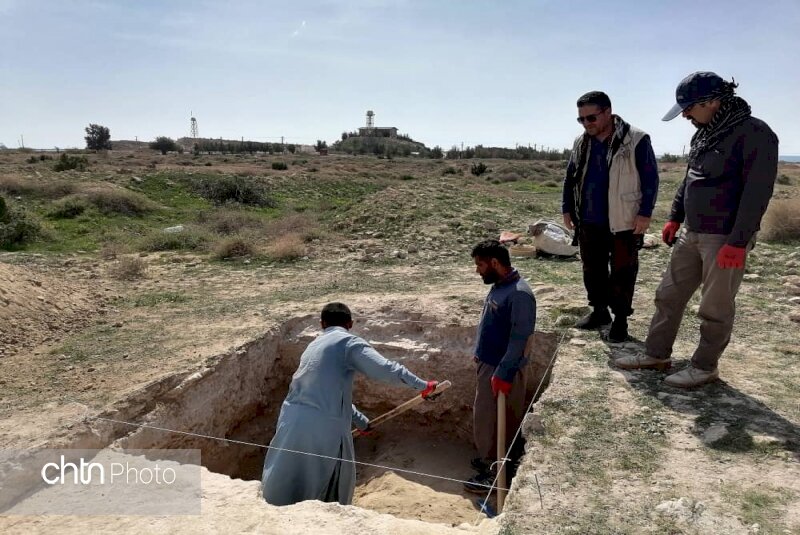Archaeological trenches carved to redefine southern Iranian port town

TEHRAN – Archaeologists have carved trenches in and around Najirom amid hopes to find new clues about the history of trade and seafaring in the ancient port town, which is situated in southern Iran along the Persian Gulf.
Three phases of archaeological work have been formulated to respectively define the legal boundaries of the ancient port town, classification of different layers of sedimentary deposits, and finally unearthing possible relics and ruins.
Located in Bushehr province, Najirom was once one of the most important and largest commercial, industrial, and demographic centers of the Persian Gulf.
Archaeologists hope to unearth mosques, ancient structures, and relics from the port town, according to provincial tourism chief Mohammad-Hossein Arastouzadeh.
The historical port, which extends for more than two kilometers along the coast, had never been investigated archaeologically, the head of the excavation team Hossein Tofiqian said last week.
Parts of this historical site have been destroyed and occupied in recent years as a result of the expansion of industries in the area, and large portions of it are on the verge of destruction, he explained. “As its first archaeological survey, the project aims to determine the legal boundaries of the historical area to prevent further damage and illegal construction within it. In addition to the demarcation of the site, stratigraphic excavations are also underway to determine the cultural sequence of this historical.”
It has been proven through the studies that Najirom has been a dynamic and active port in a wide area during all historical periods up to the early, middle, and late Islamic eras, the archaeologist explained.
The project is being carried out in collaboration with the Ports and Maritime Organization, and the Iranian National Institute for Oceanography and Atmospheric Science under the supervision of the Research Institute of Cultural Heritage & Tourism (RICHT).
Bushehr province in southern Iran is home to several ancient ports including Siraf, which Iran seeks to register on the UNESCO World Heritage list. Moreover, Bushehr is one of the most significant historical regions along the Persian Gulf, embracing significant monuments from the Elamite, Achaemenid, Parthian, and Sassanid eras.
The historical and architectural monuments of Bushehr include Islamic buildings like mosques and praying centers, mansions, old towers, castles, as well as gardens. Bushehr is also home to various archaeological mounds including Tall-e Khandaq with Sassanid architectural style, Tall-e Marv located near an Achaemenid Palace, and Qajar era Malek al-Tojar Mansion.
AFM
